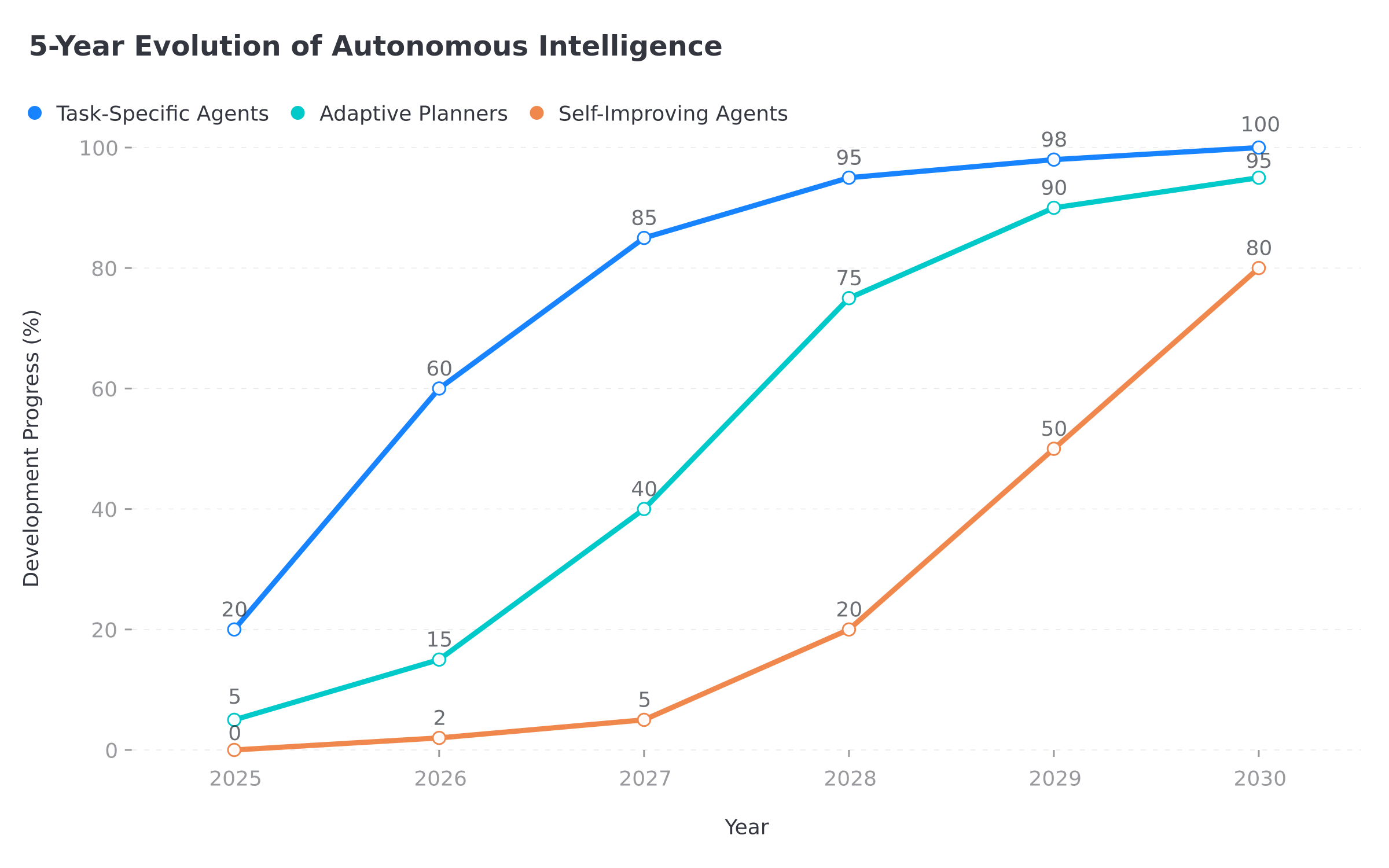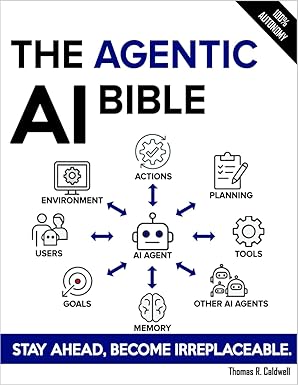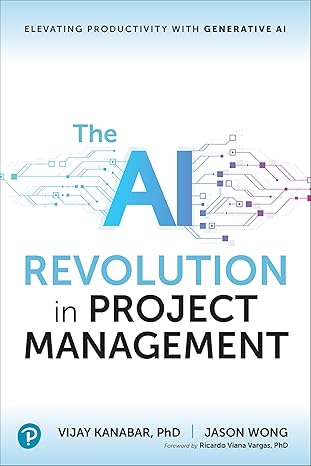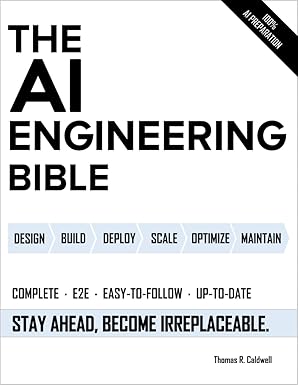Beyond the Horizon: The Next 5 Years of Autonomous Intelligence

Ad Space
Beyond the Horizon: The Next 5 Years of Autonomous Intelligence
The journey toward truly autonomous intelligence isn't a single breakthrough—it's a series of incremental advances building upon each other. Based on current research trajectories, funding patterns, and technological capabilities, we can map out a realistic timeline for how AI agents will evolve from today's task-specific tools to tomorrow's adaptive, self-improving systems.
The Three-Phase Evolution
Phase 1: Task-Specific Agents (2025-2026)
Current State → Specialized Excellence
Phase 2: Adaptive Planners (2026-2028)
Specialized Excellence → Dynamic Problem Solving
Phase 3: Self-Improving Agents (2028-2030)
Dynamic Problem Solving → Autonomous Evolution
Let's dive deep into each phase, the key players driving progress, and the technological milestones that will mark our progress.
Phase 1: Task-Specific Agents (2025-2026)
"Doing One Thing Exceptionally Well"
Current Capabilities and Limitations
Today's AI agents excel in narrow domains but struggle with generalization. A customer service bot can handle support tickets but can't write code. A coding assistant can generate functions but can't manage customer relationships.
Key Characteristics:
- Single-domain expertise
- Predefined workflows and decision trees
- Limited context awareness
- Human-defined objectives and constraints
- Reactive rather than proactive behavior
The Push Toward Specialization
Why Specialization First?
- Easier to validate and deploy safely
- Clear ROI for businesses
- Regulatory approval more straightforward
- Lower computational requirements
- Established evaluation metrics
Leading Research Labs and Their Focus Areas
OpenAI (San Francisco)
- Focus: Reasoning and tool use in specialized domains
- Key Projects: GPT-4 function calling, custom GPTs for specific industries
- 2025-2026 Goals: Agents that can reliably execute multi-step workflows in business contexts
- Funding: $10B+ from Microsoft, focus on enterprise applications
DeepMind (London)
- Focus: Scientific discovery agents and game-playing systems
- Key Projects: AlphaFold successors, mathematical reasoning agents
- 2025-2026 Goals: Agents that can conduct independent scientific research
- Notable: Strong emphasis on safety and interpretability
Anthropic (San Francisco)
- Focus: Constitutional AI and safe, helpful agents
- Key Projects: Claude for complex reasoning, harmlessness research
- 2025-2026 Goals: Agents that maintain alignment while increasing capability
- Funding: $4B+ from Google, Amazon; focus on safety-first development
Meta AI (Menlo Park)
- Focus: Multimodal agents and social interaction
- Key Projects: Embodied AI, conversational agents
- 2025-2026 Goals: Agents that understand and interact naturally with humans
- Advantage: Massive social media data for training
Breakthrough Startups to Watch
Adept AI
- Mission: AI agents that use software tools like humans
- Approach: Training agents on actual software interfaces
- Timeline: Commercial deployment expected Q3 2025
- Funding: $415M Series B, focus on enterprise automation
Inflection AI
- Mission: Personal AI companions and assistants
- Approach: Large-scale conversational AI with emotional intelligence
- Timeline: Consumer products launching 2025
- Notable: Founded by DeepMind and LinkedIn alumni
Cohere
- Mission: Enterprise-focused language models and agents
- Approach: Customizable models for specific business use cases
- Timeline: Agent platform expected Q2 2025
- Advantage: Strong enterprise partnerships and deployment experience
Glean
- Mission: Enterprise knowledge agents
- Approach: Agents that understand and navigate company-specific information
- Timeline: Advanced agent features rolling out through 2025
- Traction: Used by major tech companies for internal knowledge management
Key Milestones for Phase 1
Q1 2025:
- First commercially viable coding agents deployed at scale
- Customer service agents handling 80%+ of routine inquiries without escalation
- Financial analysis agents providing investment recommendations
Q2 2025:
- Legal research agents assisting with case preparation and document review
- Medical diagnosis agents supporting radiologists and pathologists
- Marketing agents creating and optimizing campaigns autonomously
Q3 2025:
- Scientific research agents contributing to peer-reviewed publications
- Educational agents providing personalized tutoring at scale
- Manufacturing agents optimizing production processes in real-time
Q4 2025:
- Sales agents conducting initial prospect qualification and nurturing
- HR agents handling recruitment screening and employee onboarding
- Content creation agents producing publication-ready articles and reports
Throughout 2026:
- Integration and orchestration of multiple specialized agents
- Standardization of agent interfaces and communication protocols
- Emergence of agent management platforms and marketplaces
Phase 2: Adaptive Planners (2026-2028)
"Learning to Think and Plan Dynamically"
The Leap to Adaptive Intelligence
Phase 2 represents a fundamental shift from executing predefined workflows to dynamic problem-solving. These agents can break down novel problems, adapt their strategies based on feedback, and coordinate multiple approaches simultaneously.
Key Characteristics:
- Cross-domain knowledge transfer
- Dynamic strategy formulation
- Real-time adaptation to changing conditions
- Proactive goal pursuit
- Meta-learning capabilities
Technological Enablers
1. Advanced Reasoning Architectures
- Chain-of-Thought Evolution: Multi-step reasoning with backtracking and revision
- Tree of Thoughts: Exploring multiple reasoning paths simultaneously
- Graph Neural Networks: Understanding complex relationships and dependencies
2. Memory and Context Systems
- Persistent Memory: Long-term retention of experiences and learnings
- Hierarchical Context: Understanding at multiple levels of abstraction
- Episodic Memory: Recalling and applying past problem-solving experiences
3. Multi-Modal Integration
- Vision-Language-Action: Agents that can see, understand, and act in the world
- Sensor Fusion: Integrating multiple data streams for comprehensive understanding
- Embodied Intelligence: Physical and virtual world interaction capabilities
Research Institutions Leading the Charge
Stanford HAI (Human-Centered AI Institute)
- Focus: Human-AI collaboration and adaptive systems
- Key Projects: Foundation models for robotics, interactive AI systems
- 2026-2028 Goals: Agents that can learn from human feedback and adapt in real-time
- Funding: $1B+ from industry partnerships and government grants
MIT CSAIL (Computer Science and Artificial Intelligence Laboratory)
- Focus: Embodied intelligence and adaptive robotics
- Key Projects: Agents that can manipulate objects and navigate complex environments
- 2026-2028 Goals: General-purpose robotic agents for home and workplace
- Notable: Strong industry collaboration with Boston Dynamics, Tesla
Carnegie Mellon Robotics Institute
- Focus: Autonomous systems and multi-agent coordination
- Key Projects: Self-driving vehicles, drone swarms, industrial automation
- 2026-2028 Goals: Agents that can coordinate complex multi-robot tasks
- Advantage: Decades of robotics expertise and real-world deployment experience
UC Berkeley AI Research Lab
- Focus: Reinforcement learning and adaptive behavior
- Key Projects: Agents that learn from minimal supervision
- 2026-2028 Goals: Sample-efficient learning for rapid adaptation
- Notable: Strong connections to industry through faculty and alumni
Commercial Players Driving Phase 2
Tesla (Autopilot/FSD Team)
- Focus: Real-world adaptive navigation and decision-making
- Approach: End-to-end neural networks trained on massive real-world data
- Timeline: Full self-driving capabilities expected 2026-2027
- Advantage: Largest real-world dataset and deployment experience
Boston Dynamics
- Focus: Adaptive physical manipulation and navigation
- Approach: Combining classical robotics with modern AI
- Timeline: General-purpose humanoid robots expected 2027-2028
- Notable: Recently acquired by Hyundai, focusing on commercial applications
NVIDIA (AI Infrastructure)
- Focus: Hardware and software platforms for adaptive AI
- Approach: Specialized chips and frameworks for real-time adaptation
- Timeline: Next-generation AI chips optimized for adaptive agents in 2026
- Advantage: Dominant position in AI hardware and strong software ecosystem
Microsoft (AI Platform)
- Focus: Enterprise-grade adaptive agents
- Approach: Integration with existing business tools and workflows
- Timeline: Adaptive Copilot agents expected throughout 2026-2027
- Strategy: Leveraging Office 365 ecosystem for widespread deployment
Key Milestones for Phase 2
2026:
- Q1: First adaptive agents deployed in controlled environments (labs, factories)
- Q2: Cross-domain knowledge transfer demonstrated in commercial applications
- Q3: Real-time strategy adaptation in dynamic environments (trading, logistics)
- Q4: Multi-agent coordination solving complex, multi-step problems
2027:
- Q1: Adaptive agents handling novel situations without human intervention
- Q2: Personalized learning agents adapting to individual user preferences and needs
- Q3: Autonomous research agents formulating and testing hypotheses
- Q4: Adaptive manufacturing agents optimizing entire production lines
2028:
- Q1: Cross-industry deployment of adaptive planning agents
- Q2: Agents demonstrating creativity and innovation in problem-solving
- Q3: Adaptive agents managing other AI systems and agents
- Q4: Foundation laid for self-improving capabilities
Phase 3: Self-Improving Agents (2028-2030)
"The Dawn of Recursive Enhancement"
The Ultimate Frontier
Phase 3 represents the most ambitious and potentially transformative development: agents that can improve their own capabilities. This isn't just learning from experience—it's actively modifying their own architecture, training procedures, and objective functions.
Key Characteristics:
- Recursive self-improvement
- Architecture search and optimization
- Meta-learning and meta-optimization
- Autonomous capability acquisition
- Self-directed goal evolution
The Technical Challenges
1. Safe Self-Modification
- Ensuring improvements don't compromise safety or alignment
- Maintaining interpretability during self-modification
- Preventing capability overhang and sudden intelligence explosions
2. Stable Self-Improvement
- Avoiding infinite loops or degradation during self-modification
- Maintaining coherent objectives through architectural changes
- Balancing exploration of improvements with exploitation of current capabilities
3. Alignment Preservation
- Ensuring self-improvements remain aligned with human values
- Preventing goal drift during recursive enhancement
- Maintaining human oversight and control mechanisms
Research Organizations at the Forefront
OpenAI Superalignment Team
- Mission: Ensuring advanced AI systems remain aligned during self-improvement
- Approach: Constitutional AI, interpretability research, alignment techniques
- Timeline: Foundational research 2025-2027, initial implementations 2028-2029
- Funding: Dedicated 20% of compute resources to alignment research
DeepMind Safety Team
- Focus: Safe and beneficial artificial general intelligence
- Approach: Formal verification, robustness testing, value learning
- Timeline: Safety frameworks for self-improving systems by 2027-2028
- Notable: Strong collaboration with academic institutions and government bodies
Anthropic Constitutional AI Research
- Mission: AI systems that can improve while maintaining harmlessness
- Approach: Constitutional training, debate and amplification techniques
- Timeline: Self-improving constitutional AI systems by 2028-2029
- Philosophy: Safety and beneficial outcomes as primary objectives
Future of Humanity Institute (Oxford)
- Focus: Long-term implications and safety of advanced AI
- Approach: Theoretical frameworks, risk assessment, policy recommendations
- Timeline: Governance frameworks for self-improving AI by 2027
- Influence: Significant impact on policy and industry standards
Standards Bodies and Governance
Partnership on AI
- Role: Industry standards for self-improving AI systems
- Members: Major tech companies, research institutions, civil society
- Timeline: Initial standards expected 2026-2027
- Focus: Safety, transparency, and beneficial deployment
IEEE Standards Association
- Role: Technical standards for autonomous and self-improving systems
- Timeline: Standards for self-modifying AI systems by 2027-2028
- Scope: Safety protocols, testing procedures, certification processes
NIST AI Risk Management Framework
- Role: Government standards for advanced AI systems
- Timeline: Updated framework for self-improving AI by 2027
- Impact: Likely to influence global regulatory approaches
UN AI Advisory Body
- Role: International coordination on advanced AI governance
- Timeline: Recommendations for self-improving AI by 2028
- Challenge: Balancing innovation with safety across different national approaches
Potential Breakthrough Scenarios
Scenario 1: Gradual Enhancement (Most Likely)
- Timeline: 2028-2030
- Characteristics: Incremental improvements in specific capabilities
- Examples: Agents that optimize their own neural architectures, improve their training procedures
- Safety: Easier to monitor and control, gradual capability increases
Scenario 2: Capability Jumps (Moderate Probability)
- Timeline: 2029-2030
- Characteristics: Sudden improvements in multiple capabilities simultaneously
- Examples: Breakthrough in meta-learning leading to rapid capability acquisition
- Safety: More challenging to predict and control, requires robust safety measures
Scenario 3: Recursive Takeoff (Lower Probability, High Impact)
- Timeline: Potentially 2029-2030
- Characteristics: Self-improvements leading to increasingly rapid further improvements
- Examples: Agent discovers fundamental improvements to intelligence itself
- Safety: Requires extensive preparation and safety measures
Key Milestones for Phase 3
2028:
- Q1: First demonstrations of limited self-improvement in controlled environments
- Q2: Agents that can modify their own hyperparameters and training procedures
- Q3: Self-improving agents deployed in low-risk applications
- Q4: International standards for self-improving AI systems established
2029:
- Q1: Agents that can design and implement their own architectural improvements
- Q2: Self-improving agents demonstrating novel capabilities not explicitly programmed
- Q3: Multi-agent systems with collective self-improvement capabilities
- Q4: First commercial applications of self-improving agents in specialized domains
2030:
- Q1: Self-improving agents contributing to their own research and development
- Q2: Agents that can acquire entirely new domains of expertise autonomously
- Q3: Self-improving systems approaching or achieving artificial general intelligence
- Q4: Foundation established for post-AGI development and deployment
Cross-Phase Enablers and Challenges
Computational Infrastructure
Current Limitations:
- Training costs in millions of dollars for large models
- Inference costs limiting real-time applications
- Energy consumption and environmental impact
Expected Developments:
- 2025-2026: 10x improvement in training efficiency through better algorithms and hardware
- 2026-2028: Specialized chips for adaptive and self-improving systems
- 2028-2030: Quantum-classical hybrid systems for certain AI workloads
Key Players:
- NVIDIA: Continued dominance in AI chips, new architectures for adaptive systems
- Google (TPU): Specialized processors for large-scale AI training and inference
- Intel: Neuromorphic chips for energy-efficient AI
- Startups: Cerebras, Graphcore, SambaNova focusing on AI-specific hardware
Data and Training Methodologies
Current Challenges:
- Data quality and bias issues
- Limited availability of high-quality training data
- Expensive and time-consuming human feedback collection
Expected Solutions:
- Synthetic Data Generation: AI-generated training data for specialized domains
- Few-Shot Learning: Agents that can learn from minimal examples
- Self-Supervised Learning: Learning from unlabeled data and environmental interaction
- Federated Learning: Training on distributed data while preserving privacy
Safety and Alignment Research
Critical Research Areas:
- Interpretability: Understanding how advanced agents make decisions
- Robustness: Ensuring reliable performance across diverse conditions
- Value Alignment: Maintaining human-compatible objectives through capability increases
- Control Mechanisms: Maintaining human oversight and intervention capabilities
Timeline for Safety Solutions:
- 2025-2026: Improved interpretability tools for current agent systems
- 2026-2028: Robust alignment techniques for adaptive agents
- 2028-2030: Safety frameworks for self-improving systems
Industry Impact and Economic Implications
Job Market Transformation
Phase 1 (2025-2026):
- Automation of routine cognitive tasks
- New roles in agent management and oversight
- Increased demand for AI specialists and trainers
Phase 2 (2026-2028):
- Displacement of complex analytical roles
- Emergence of human-agent collaboration jobs
- Growth in creative and interpersonal roles
Phase 3 (2028-2030):
- Fundamental restructuring of knowledge work
- New economic models for human-AI collaboration
- Potential for universal basic income discussions
Economic Value Creation
Projected Market Sizes:
- 2025: $50B autonomous agent market
- 2027: $200B adaptive AI systems market
- 2030: $1T+ self-improving AI economy
Key Value Drivers:
- Productivity improvements across all sectors
- New products and services enabled by autonomous intelligence
- Cost reductions in research, development, and operations
Regulatory and Policy Landscape
Near-Term (2025-2026):
- Industry self-regulation and voluntary standards
- Government pilot programs and sandboxes
- International cooperation on AI governance
Medium-Term (2026-2028):
- Formal regulations for adaptive AI systems
- Certification requirements for high-risk applications
- International treaties on AI development and deployment
Long-Term (2028-2030):
- Comprehensive frameworks for self-improving AI
- Global coordination on advanced AI governance
- Potential for AI rights and personhood discussions
Preparing for the Autonomous Future
For Organizations
Phase 1 Preparation (Now-2026):
- Identify high-value use cases for task-specific agents
- Develop internal AI expertise and capabilities
- Establish data strategies and infrastructure
- Create governance frameworks for AI deployment
Phase 2 Preparation (2025-2028):
- Experiment with adaptive agent technologies
- Redesign workflows for human-agent collaboration
- Invest in employee retraining and upskilling
- Develop strategies for competitive advantage through AI
Phase 3 Preparation (2027-2030):
- Prepare for fundamental business model changes
- Develop expertise in self-improving system management
- Create long-term strategies for post-AGI economy
- Engage with policy and governance discussions
For Individuals
Skill Development Priorities:
- Technical Skills: AI/ML expertise, agent development, human-AI interaction design
- Soft Skills: Creativity, emotional intelligence, complex problem-solving
- Domain Expertise: Deep knowledge in specific fields that complement AI capabilities
- Adaptability: Continuous learning and adaptation to changing technology landscape
Career Strategy Considerations:
- Focus on roles that complement rather than compete with AI
- Develop expertise in managing and collaborating with AI systems
- Build skills in areas requiring human judgment, creativity, and empathy
- Stay informed about AI developments and their implications for your field
Conclusion: Navigating the Path to Autonomous Intelligence
The next five years will witness the most significant transformation in artificial intelligence since its inception. The progression from task-specific agents to adaptive planners to self-improving systems represents not just technological advancement, but a fundamental shift in the relationship between humans and artificial intelligence.
Key Takeaways:
-
The progression is incremental but accelerating: Each phase builds on the previous one, with increasing capability and impact.
-
Multiple players are driving progress: Success will come from collaboration between research institutions, tech companies, startups, and standards bodies.
-
Safety and alignment are critical: The most advanced capabilities require the most sophisticated safety measures.
-
Preparation is essential: Organizations and individuals who start preparing now will be best positioned for success.
-
The future is collaborative: The most successful outcomes will involve thoughtful human-AI collaboration rather than replacement.
The journey toward autonomous intelligence is not predetermined. The choices we make today—in research priorities, safety measures, governance frameworks, and deployment strategies—will shape the trajectory of this transformation.
By understanding the timeline, key players, and critical milestones, we can work together to ensure that the development of autonomous intelligence benefits humanity while minimizing risks and negative consequences.
The future of autonomous intelligence is not something that happens to us—it's something we actively create through our decisions, investments, and collaborative efforts today.
Stay informed about the latest developments in autonomous intelligence by following the research labs, companies, and standards bodies mentioned in this article. The future is being built now, and understanding these developments is crucial for navigating the transformative years ahead.
Ad Space
Recommended Tools & Resources
* This section contains affiliate links. We may earn a commission when you purchase through these links at no additional cost to you.
📚 Featured AI Books
OpenAI API
AI PlatformAccess GPT-4 and other powerful AI models for your agent development.
LangChain Plus
FrameworkAdvanced framework for building applications with large language models.
Pinecone Vector Database
DatabaseHigh-performance vector database for AI applications and semantic search.
AI Agent Development Course
EducationComplete course on building production-ready AI agents from scratch.
💡 Pro Tip
Start with the free tiers of these tools to experiment, then upgrade as your AI agent projects grow. Most successful developers use a combination of 2-3 core tools rather than trying everything at once.
🚀 Join the AgentForge Community
Get weekly insights, tutorials, and the latest AI agent developments delivered to your inbox.
No spam, ever. Unsubscribe at any time.



